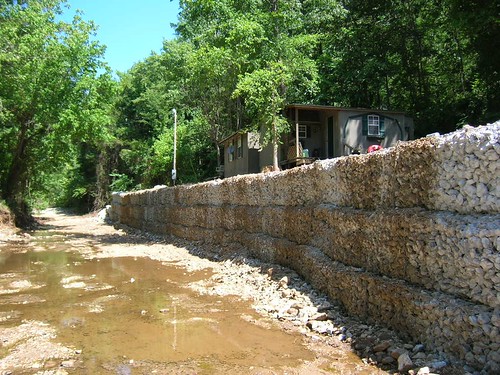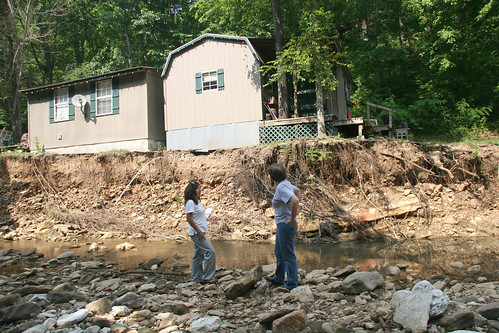
Although raging waters had subsided at Deanna Young’s home in Ponca, Ark., a flood of emotions hit her when she found out USDA’s Natural Resources Conservation Service (NRCS) would pay 100 percent of the cost of protecting her home from falling into Adds Creek.
“I couldn’t hold back the tears,” Young said. “My prayers had been answered.”
After the creek flooded her property in April, washing away the stream bank next to the house where she lives with her three children, Young had qualified for help under the Emergency Watershed Protection (EWP) program. But the program asks beneficiaries to come up with one-quarter of the cost of rebuilding after a flood damages their property. Young couldn’t afford the cost-share, and the bank turned down her loan request.
The mother of three, who works a full-time job at a Christian book warehouse and also holds down two part-time jobs cleaning buildings and mowing a cemetery, wasn’t sure what to do next.
But Margaret Lonadier, NRCS district conservationist for Boone and Newton counties, continued to follow up with Young—and she had an idea. Although the EWP program doesn’t normally allow NRCS to pay 100 percent of the cost of repairs to an individuals’ property, a waiver can be granted for unusual situations or circumstances. And, when the cost-share became an issue, Lonadier sent a note to Arkansas State Conservationist Mike Sullivan, who is the person authorized to pursue waivers in the state.
The cost-share waiver was approved, and work began almost immediately on the Youngs’ property. It was completed in June.
The project stabilized the stream bank, which is only 8 feet from Young’s house. During the flood, a 10-foot-wide by 240-foot-long swath of the stream bank was washed down Adds Creek to the Buffalo National River. Stabilizing the stream bank will not only protect the home, but will also prevent more sediment from washing into the Buffalo National River. Sediment is a major cause of water pollution.

The bank was stacked with gabions, rectangular wire containers filled with rocks and soil. The gabions will reinforce the stream bank and act as a 9-foot-tall retaining wall protecting Young’s home.
Find out more about the Emergency Watershed Protection (EWP) Program.
Check out more conservation stories on the USDA blog.
Follow NRCS on Twitter.
